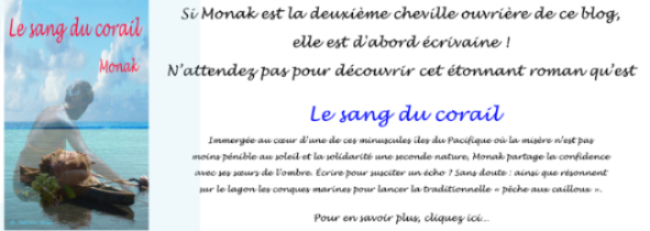
The three kings of the French Republic
French territory of the South Pacific, the archipelago
of Wallis and Futuna yet lives under the authority of three monarchies with the
blessing of the French Republic!
The archipelago of Wallis and Futuna made headlines in the French press for a few days because the disastrous
renown of Hurricane Thomas which does extensive damage, but fortunately without
casualties there.
 |
| Wallis and Futuna: France, where is? |
But,
who, outside the philatelists and the media in the event of a disaster, knows
this archipelago of the South Pacific?
Geography of
Wallis and Futuna
Located between the islands
of Fiji at the West, Samoa at the East and Tonga islands in the South-east, it’s
over 2000 km apart between Wallis and Futuna to New Caledonia.
This small archipelago is a
part of what is called the Polynesian triangle.
 |
| Map of the Three Kingdoms of Wallis and Futuna |
The T.O.M (Territoire
d’Outre-Mer i.e.: Oversea Territory) of Wallis and Futuna is actually compound
of two separate archipelagoes about 230 km distant from each other:
-
Wallis Islands,
at the Northeast, comprising the islands of Uvea (about 9 000
inhabitants), Nukuatea, and a dozen islets and motu, all inhabited;
-
Horn Islands with
Futuna (less than 5 000 inhabitants) and Alofi (one permanent resident!)
With its relatively recent
geological formation, the highest peak in the archipelago, Mount Puke on Futuna
rises to 524 m against 417m with Mount Kolofau, on Alofi.
 |
| Wallis Islands from a
bird’s eye view |
With 13 445 inhabitants
in the last census (whose approximately 70% live in Wallis), the archipelago
knows, for the first time since its annexation to France, a significant decline
in its population: nowadays it counts under 1 500 inhabitants.
History of
Wallis and Futuna
It’s impossible to date
precisely when the first humans set foot on the islands of the South Pacific, but
the estimated period would be during the first millennium BC.
These are the same
exceptional sailors, aboard their large double-hull canoes, who came from Asia
and populated the entire Polynesian triangle.
 |
| Louis Antoine de Bougainville |
The first Westerners to set
foot there are the Dutch Willem Schouten and Jacob Le Maire, who discover
Futuna, May 22, 1616.
Wallis Island was only
discovered 150 years later by the British Samuel Wallis, whose it bears name.
The first French to land was
Louis Antoine de Bougainville, 11 May 1768.
 |
| The Bay of Leava, on Futuna |
Yet it was not until the
establishment of Catholic missionaries in the nineteenth century to see in the
archipelago a significant European presence.
It was until 1887, at the
request of Queen Amelia, that the kingdoms of Uvea in Wallis, Alo and Sigave in
Futuna sign a protectorate treaty with France.
Finally, it was in 1961 that
the archipelago became an Oversea Territory (TOM).
One wealth:
nature
Wallis and Futuna are quite
poor islands, mainly because of their dangerous access and a severe shortage of
fresh water. It’s for this reason that some islands (as Alofi) remain
uninhabited.
 |
| Poi, the capital of the kingdom of Futuna |
These features allow only a
rural economy, focused on artisanal lagoon fishing and subsistence farming.
In this very poor population,
70% don’t have access to the cash economy. And on the 2 000 jobs in the archipelago,
1 100 are civil service positions.
Some resources result from
flags of complacency and flat annual tax on offshore companies with no activity
on the territory of Wallis and Futuna. These resources should quickly disappear
due to European regulations in the context of the fight against money
laundering.
The three
kings of the French Republic
If the archipelago of Wallis
and Futuna is a French territory, and as such subject to the rules of the
French Constitution, it has very specific institutions.
Thus, if the government of
the Republic is concentrated in the person of the Senior Administrator, the
archipelago is divided into three traditional monarchies: the kingdoms of Uvea
(on Wallis), Alo and Sigave (on Futuna).
The three monarchs, with
elected councilors and representatives of the State, govern the archipelago.
 |
| Kapeliele Faupala, the new king of Wallis |
Warning, these are not
hereditary but aristocratic monarchies: they are the noble families, Aliki, who
elect or destitute kings.
Customary power is important
but decentralized: on the side of the anvil, the kings must negotiate with
village leaders and fund the demands of the Aliki who elect them and whose
moral authority is based on population. On the side of the hammer, they must
also negotiate with the representative of the State for obtain the development
budgets of the territory.
To cover their costs, the
Kings have an annual budget of the Republic which also compensates royal
ministers and chiefs of districts and villages.
Thus, to have guillotined
its last king, the French Republic remains committed to a certain idea of
monarchy.
 |
| A feast in a school of Wallis |
Moreover, the monarchical
system of Wallis and Futuna don’t seem so crazy: between an elected king and a
president of the Fifth Republic with virtually absolute powers, even is there a
big difference?
An article
of Julien Gué
Translated from French by Monak
Copyright
Julien Gué. Ask for the author’s agreement before any reproduction of the
text or the images on Internet or traditional press.


Aucun commentaire :
Enregistrer un commentaire
Cet article vous a fait réagir ? Partagez vos réactions ici :